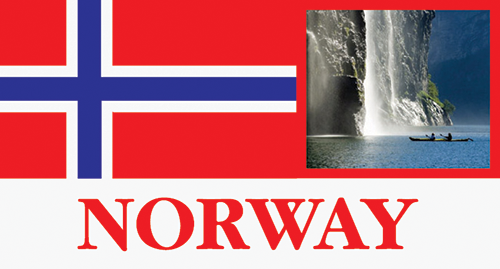


![]()
ONLINE

Norway’s Fjords
Editors’ Note
Before working with Fjord Norway, Kristian Jørgensen was responsible for marketing Norway to international customers since 1992. For three years, he worked with the Norwegian Tourist Board putting together large international marketing campaigns; from 1997 to 2000 he was Director of Marketing for the organization that planned and carried out the European Capital of Culture Year 2000 in Bergen; and, for three years, he was CEO for the Historic Hotels and Restaurants of Norway. In addition, he served as Vice President for the Historic Hotels of Europe.
Organization Brief
In 2004, The National Geographic Traveler’s panel of specialists rated Fjord Norway (fjordnorway.com) the world’s most attractive, unspoiled travel destination. In 2005, UNESCO included the fjords of Norway, exemplified by two of them – Geirangerfjord and Nærøyfjord – on its World Heritage List. Soon after, in 2006, The National Geographic Traveler’s panel of specialists rated Fjord Norway the best cared for UNESCO World Heritage Site in the world. Today, the region is positioning itself as one of the new and most spectacular adventure destinations in the world, offering a year-round range of everything from the most extreme adventure products you can find to soft adventure products with the fjord landscape as a backdrop. The Fjord Norway Tourist Board has been nominated the best destination marketing company in Europe and has seen a 25 percent growth of tourism over the past four years.
How did the fjords come to be?
Fjords were created by glaciers cutting into mountains. Before it was a flat piece of mountain sticking out into the ocean, and glaciers cut into it and formed these deep waterways, where basically seawater pours into the country. It runs into the mountains on the other side.
Are all fjords pretty much the same or do they differ?
Lysefjord is dramatic – it is rough and tough; Hardanger is a beautiful place where people live, but it’s not as dramatic; Sognefjord is the longest in the world; and we have the famous Geirangerfjord, which is an UNESCO fjord. It has waterfalls splashing into the water, steep mountains rising up, and a lush green color.
You have a wonderful story about a Norwegian named Ole Bull, who discovered Grieg and Ibsen. Did these things happen in Bergen?
Absolutely. He was the Michael Jackson of the 1800s – a really good violin player; he traveled around the world and played for czars and presidents. He played his Stradivarius violin.
He found Edvard Grieg as a small boy and paid for his tuition to study in Leipzig. He built the free national theater in Bergen with his own money. The first director he found there was Henrik Ibsen, and he wrote his first theater play in Bergen.
This was a guy who found talent and also put his footprint, not just on Bergen, but on all of Norway, including on the fjord landscape.
What seasons are the best for visiting the fjords?
In May, the colors are lush green, waterfalls are splashing because the snow is melting, and the colors are amazing. In summertime, you get light going up until 12 or 1 in the evening so it’s amazing being out. In the fall, the whole countryside turns into fire as the leaves turn. I love winter because it is more quiet, but also the light changes and it’s a great time to see the fjords.•